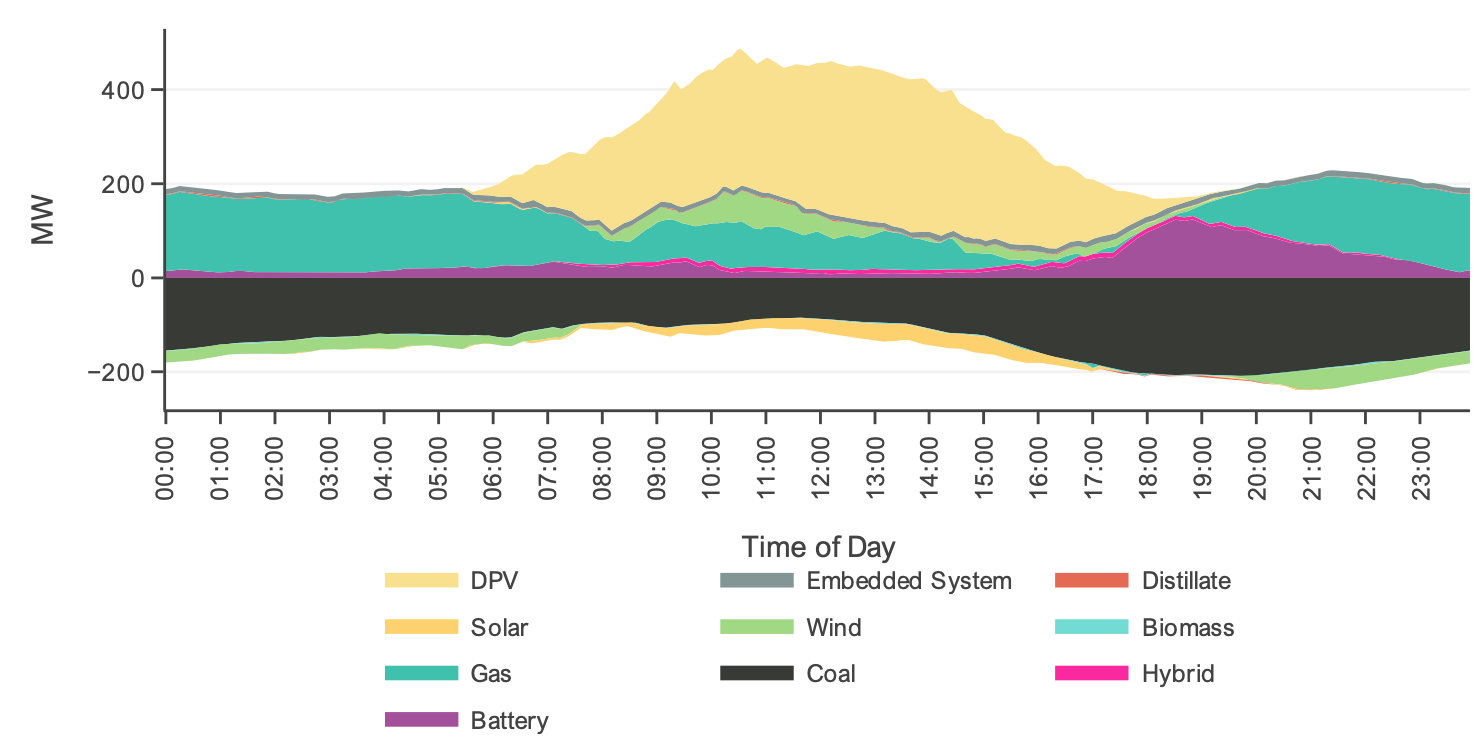Five reasons Australia's green hydrogen dream has foundered
Several big green hydrogen projects have been shelved. An expert explains why Australia’s sky-high ambition for the industry is struggling to reach fruition.
The south-west grid shattered numerous records in late 2024 as new batteries and more rooftop solar replaced unavailable coal-fired power.

WA's south-west power grid shattered numerous records in late 2024 as new batteries and more rooftop solar replaced unavailable coal-fired power.
According to the Australian Energy Market Operator's Quarterly Energy Dynamics report released on Thursday, the state's three coal-fired stations in Collie generated almost 20 per cent less power in the December quarter than 12 months ago because they were increasingly unavailable.
Instead, customers on the South West Interconnected System were served by 20 per cent more output from rooftop solar, a 14 per cent jump in gas-fired generation and a growing contribution from grid-scale batteries.

The switch from coal cut total greenhouse gas emissions to power the south-west by five per cent despite a four per cent jump in demand for the quarter.
The power system is having to cope with more extreme demands.
On December 11, when Perth was sweltering at 40 degrees, demand hit a record for the December quarter.
Conversely, on November 10, a weekend, mild temperatures negated the need to use air conditioning, and sunny skies boosted rooftop solar output and sent operational demand (everything but non-rooftop solar energy) to a record low.
Over the three months, 46 per cent of power came from renewable generation, and the average wholesale price of $79.93/megawatt was four per cent cheaper than a year ago.
At one time on November 17, renewables supplied 85 per cent of demand.

Batteries now have a significant role, supplying an average of 103 megawatts in the evening from 5:30 PM to 9:00 PM, compared to just six megawatts a year ago.
Without the batteries storing excess solar power during the day, additional coal would have had to be burnt each evening.
The role of batteries will continue to grow, with more than 2000 megawatts of capacity expected to be installed by the end of 2026.
7 February 2025 - Cunderdin added to battery list
All the info and a bit of comment on WA energy and climate every Friday